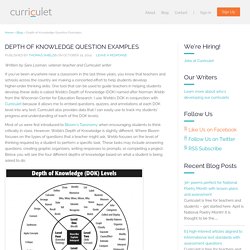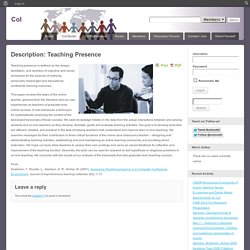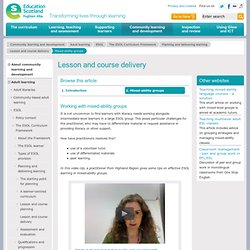

What Is Web 3.0 and Is It Here Yet? Web 3.0 is a simple term with a much more complicated meaning, which is why the simple question of "What is Web 3.0" may get you dozens of different answers.

One of the biggest difficulties in nailing down a definition or metric for evaluating Web 3.0 is the lack of a clear, distinct definition for it, especially compared to what we already know about Web 2.0. Most people generally have some idea that Web 2.0 is an interactive and social web facilitating collaboration between people. This is distinct from the early, original state of the web (Web 1.0) which was a static information dump where people read websites but rarely interacted with them.
If we distill the essence of change between Web 1.0 and Web 2.0, we can derive an answer. Web 3.0 is the next fundamental change both in how websites are created and more importantly, how people interact with them. When Will Web 3.0 Begin? Perfect English Grammar. Depth of Knowledge Question Examples - Curriculet. Written by Sara Losman, veteran teacher and Curriculet writer If you’ve been anywhere near a classroom in the last three years, you know that teachers and schools across the country are making a concerted effort to help students develop higher-order thinking skills.

One tool that can be used to guide teachers in helping students develop these skills is called Webb’s Depth of Knowledge (DOK) named after Norman Webb from the Wisconsin Center for Education Research. I use Webb’s DOK in conjunction with Curriculet because it allows me to embed questions, quizzes, and annotations at each DOK level into any text.
Curriculet also provides data that I can easily use to track my students’ progress and understanding of each of the DOK levels. Most of us were first introduced to Bloom’s Taxonomy when encouraging students to think critically in class. Examples of Depth of Knowledge Questions/Prompts at each level of thinking: Level 1-Recall: Level 2-Skill/Concept: Level 3: Strategic Thinking: Carol Dweck: The power of believing that you can improve. Five Stage Model - Gilly Salmon. Learning & Teaching Practice. Description: Teaching Presence. Teaching presence is defined as the design, facilitation, and direction of cognitive and social processes for the purpose of realizing personally meaningful and educational worthwhile learning outcomes.

This paper reviews the tasks of the online teacher, gleaned from the literature and our own experiences as teachers of graduate level, online courses. It next introduces a technique for systematically analyzing the context of the text-based transcripts of those courses. We seek knowledge hidden in the data from the actual interactions between and among students and on-line teachers as they develop, facilitate, guide and evaluate learning activities. Our goal is to develop tools that are efficient, reliable, and practical in the task of helping teachers both understand and improve their on-line teaching. From: Anderson, T., Rourke, L., Garrison, D. Keith Hughes Explains How to Make Flipped Classroom Videos. Lesson plans. Managing Language Teaching Organisations – ideas, support, links and problem solving. Geddit. Mixed-ability groups - Lesson and course delivery - Community learning and development.
Working with mixed-ability groups It is not uncommon to find learners with literacy needs working alongside intermediate-level learners in a large ESOL group.

This poses particular challenges for the practitioner, who may have to differentiate material or request assistance in providing literacy or other support. How have practitioners resolved this? Use of a volunteer tutoruse of differentiated materialspeer learning. In this video clip, a practitioner from Highland Region gives some tips on effective ESOL learning in mixed-ability groups. Much has been written about differentiation in the school sector, less so in the world of ELT; the One Stop English website suggests some strategies for teaching mixed ability classes. The ESOL practitioner needs to be constantly aware of group dynamics, of which individuals work best together, and which groupings and seating arrangements to avoid. This ESOL practitioner advises that you make good use of the higher-level learners in the group.